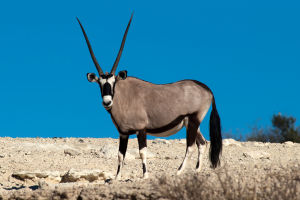
The giant panda, known for its black and white fur and gentle demeanor, has become an icon of conservation.
However, despite its popularity, the giant panda remains endangered, facing a range of threats that jeopardize its survival.
These challenges are multifaceted, involving habitat loss, dietary limitations, and the effects of climate change!
1. Habitat Loss and Fragmentation
One of the primary reasons for the giant panda’s endangered status is the ongoing loss and fragmentation of its natural habitat. Panda rely on bamboo forests, which make up nearly 99% of their diet. As human activity encroaches on these forests, such as through deforestation and urban development, panda lose the space they need to forage, breed, and thrive. Habitat fragmentation further isolates populations, reducing genetic diversity and making it harder for pandas to find mates, leading to an increased risk of inbreeding.
2. Dependence on Bamboo
Giant panda have a highly specialized diet, relying almost exclusively on bamboo. This dependency creates a narrow food source, making them especially vulnerable to changes in the environment. Bamboo forests have a slow growth cycle, and the plant is susceptible to diseases, pests, and changes in climate.
A bamboo forest’s ability to regenerate is also affected by human activities like logging or land-use changes, leaving pandas without the necessary food resources. With bamboo forests shrinking, the already limited food supply becomes even scarcer.
3. Low Reproductive Rates
Giant panda have a low reproductive rate, which exacerbates the challenges they face. Female pandas are only fertile for a few days each year, and they often have trouble conceiving in the wild. When they do reproduce, it is typically one cub at a time, and the survival rate for cubs can be low in the wild due to predation or other environmental factors. Captive breeding programs have made some strides in increasing panda populations, but the challenges of breeding in captivity are also significant, requiring specific conditions for success.
4. Climate Change and Bamboo Growth
Climate change poses a growing threat to the giant panda, particularly by affecting bamboo growth. Rising temperatures and unpredictable weather patterns are damaging bamboo habitats, as the plant struggles to survive under changing conditions.
Bamboo relies on cool, stable climates, and even small fluctuations in temperature can harm its growth. As bamboo forests become increasingly unstable, the giant panda’s already limited food supply is further threatened, adding another challenge to its survival
5. Conservation Efforts and Ongoing Threats
Efforts to protect the giant panda have made significant progress, particularly in China, where the panda is native. Protected reserves and habitat restoration initiatives have helped increase panda populations. However, challenges persist. Poaching, although reduced, still poses a threat, as pandas are targeted for their fur and body parts. Furthermore, the fragmentation of habitats due to human development continues to limit the panda’s ability to thrive.
The giant panda’s endangered status is the result of multiple, interconnected challenges. From the destruction of bamboo forests and the plant's vulnerability to climate change to the panda’s low reproductive rate, each factor contributes to the species’ struggle for survival. While significant strides have been made in conservation, the giant panda’s future depends on continued efforts to protect its habitat and ensure the sustainability of its food source.
By addressing these challenges, there is hope that the giant panda can continue to roam the forests of China for generations to come!
The Endangered: Panda
Video by The WildFive Singapore


